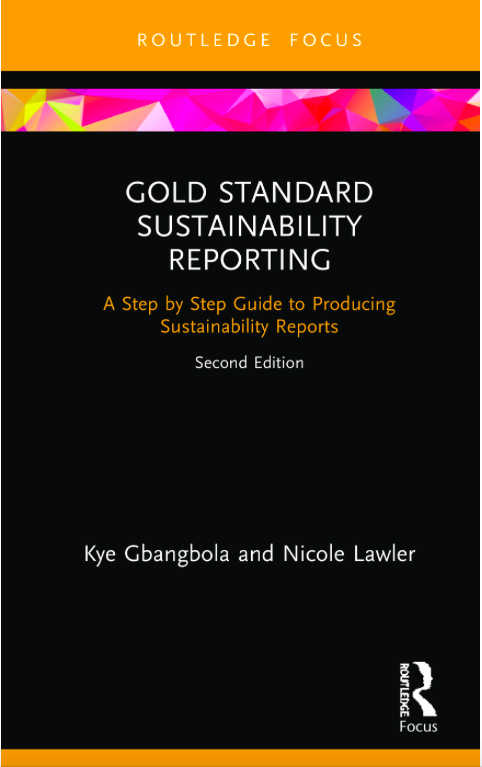
Announcing the launch of G4, GRI deputy chief executive Nelmara Arbex said: “The increasing demand for sustainability information is inevitable. But this demand is also a demand for sustainability-related information that matters. This is what G4 is about.”
According to GRI, the focus on materiality will make reports more relevant, more credible and more user-friendly. This greater focus will enable organisations to better inform markets and society on sustainability issues, claims the body behind the world’s most widely used sustainability reporting framework.
Value chainsWhereas G3 was an “extent of reporting standard”, labelling an organisation A, B or C based on the number of disclosures made, G4 is described as an “in accordance with” standard. It contains two options – “core” and “comprehensive” – that focus on the quality of reporting and reinforce the freedom to report only on what is “material”.
Together the two options encourage reports to be more concise and offer greater clarity on issues, such as how value is created and long-term resiliencies.
G4 also requires greater integration between organisational functions and their supply chains. G3 touched on the supply chain, but offered little guidance in this area because overall it focused only on legally-owned entities – parent organisations and their subsidiaries. G4, however, is immersed in supply-chain procurement practicesand includes both inside and outside reporting boundaries, which brings a major new dimension to the guidelines. Such an approach means it becomes clearer where an organisation’s responsibilities begin, end and are improved over time.
The performance of supply chains can have a significant impact on an organisation through all three dimensions of sustainability – economic, social and environmental – so G4 places greater importance on selecting suppliers and collaboration. Supply chains can increase the energy use and emissions attributed to supermarkets, for example, by a factor of 10.
Supply chains also hold significant reputational risk. Recent examples include: Primark selling products made at the Rana Plaza building in Bangladesh where 1,129 people were killed when it collapsed earlier this year; the London 2012 organising committee’s decision to allow Dow Chemicals to sponsor the “wrap” on the Olympic stadium, which was condemned by campaigners because of Dow’s links to the company responsible for the 1984 Bhopal disaster; and allegations that representatives of pharmaceutical company GSK bribed doctors in China.
Greater visibilityAssurance remains recommended in G4, but there is a big difference in focus between the fourth iteration of the guidelines and previous versions. Assurance in G3 can best be described as being “below the radar”, whereas it is fully visible in G4. The new guidance requires assurers to be competent in GRI frameworks and the reporting organisation’s industry sector. The approach provides greater trust that the assurance is thorough, consistent, has integrity and is much more integral to the reporting process.
The G4 guidelines are also more intuitive and accessible to small organisations. GRI has achieved this by producing user-friendly documentation. In addition to the more logical approach taken in G4, the new guidelines turn the G3 “standard disclosures on profile and indicator protocols” into general standard disclosures (GSDs) and specific standard disclosures (SSDs) respectively. There are no longer two types of indicator: both are considered the same, so the “core” and “additional” distinctions have been dropped. Many users will also welcome the greater detail in G4 on GSDs, which cover:
- strategy and analysis;
- organisational profile;
- identified material aspects and boundaries;
- stakeholder engagement;
- report profile;
- governance; and
- ethics and integrity.
Making linksG4 reinforces the guidance’s links to other environmental and sustainability reporting frameworks. This is achieved by setting out how GRI reporting can best be used in combination with other reporting initiatives and standards, such as: the framework from the International Integrated Reporting Council; the Carbon Disclosure Project; ISO standards, including ISO 14001; the UN Global Compact; the mandatory greenhouse-gas reporting requirements for UK quoted companies; and the OECD guidelines for multinational enterprises.
The aim of the new guidance is to help organisations produce more concise, complete and relevant reports. With more than two-thirds of the world’s largest companies adhering to GRI guidelines, global business leaders are now likely to race for the top and set about upgrading to G4. Most will be pleased to work with a framework where they are free to choose elements that are material enough to report on.
Good sustainability reporting can lead to improved profits, reduced risks and new business opportunities. For more large companies, reporting has become a mandate to operate and has enhanced their corporate reputations. Investors are more frequently refusing to lend to businesses in some sectors that fail to report non-financial information, while lowering the cost of capital to those who do.
As the essential business case becomes stronger, reporting on environmental impacts is easier than ever. Managing a firm’s sustainability is a way of making it as profitable as it can be and communicating about those efforts plays a big role. Some may say that G4 is just a vehicle to make companies look good with minimal expenditure and significant return. In reality, sustainability reporting that follows the best available standard has become necessary to understand the real value of a business. G4 provides the leadership organisations need to report and transform in a way that will enable them to meet 21st century challenges.
| Kye Gbangbola, MIEMA CEnv, is lead director on consultancy, training and assurance at Total Eco Management (TEM), totalecomanagement.co.uk. BRE are partnering with TEM by hosting the GRI-approved training programme 4 & 5th December 2013. Special discounts apply |
















 RSS Feed
RSS Feed
